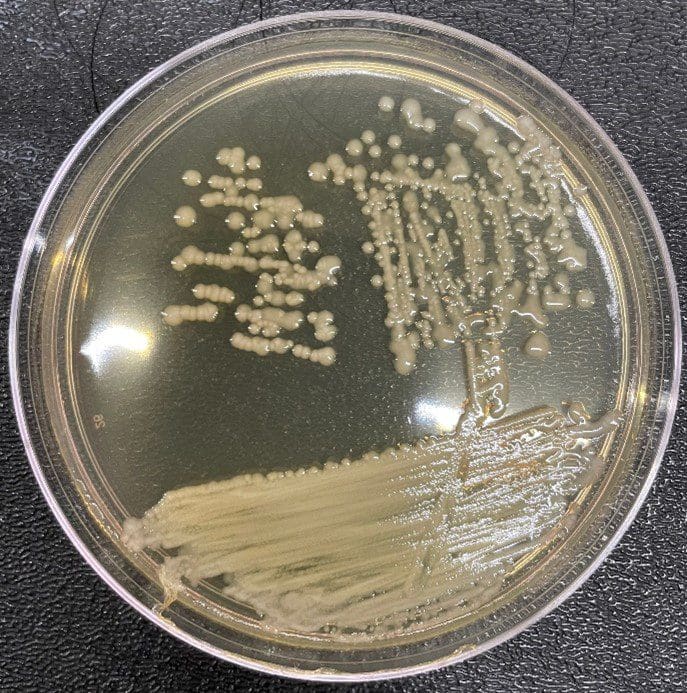
Get A Testing Quote
Klebsiella oxytoca
STRUCTURE AND PHYSIOLOGY
K. oxytoca is a Gram-negative, rod-shaped, facultatively anaerobic bacterium with a bi-membrane structure. Unlike its relative K. pneumoniae, K. oxytoca is indole-positive (ability to convert tryptophan into indole) and can perform lactose fermentation for metabolism. It is a naturally occurring bacterium in soil, and some strains can fix nitrogen in anaerobic conditions.
TRANSMISSION AND DISEASE
This opportunistic pathogen is found throughout humans within the intestinal tract, nose, and mouth. Infection by Klebsiella is commonly hospital-acquired, entering the body in ways such as catheters, wounds, and intravenous line sites. In the lungs, K. oxytoca causes pneumonia-like symptoms and a serious infection. It can also cause urinary tract and wound infections.
DISINFECTION
As a non-spore forming bacterium, K. oxytoca is one of the easier-to-disinfect microorganisms on the disinfection hierarchy.
NOTES
K. oxytoca has multiple antibiotic resistance mechanisms, one being extended-spectrum beta-lactamase (ESBL). This bacterium is normally found in men and animal bowels, water, and soil.
REFERENCE(S)
Singh, L., Cariappa, M. P., & Kaur, M. (2016). Klebsiella oxytoca: An emerging pathogen?. Medical journal, Armed Forces India, 72(Suppl 1), S59–S61. https://linkinghub.elsevier.com/retrieve/pii/S0377123716300508
Lieberman JA. Klebsiella oxytoca. PathologyOutlines.com website. https://www.pathologyoutlines.com/topic/microbiologyklebsiellaoxytoca.html. Accessed June 6th, 2022.
Reichel, M., Schlicht, A., Ostermeyer, C. et al. Efficacy of surface disinfectant cleaners against emerging highly resistant gram-negative bacteria. BMC Infect Dis 14, 292 (2014). https://bmcinfectdis.biomedcentral.com/articles/10.1186/1471-2334-14-292
Share

